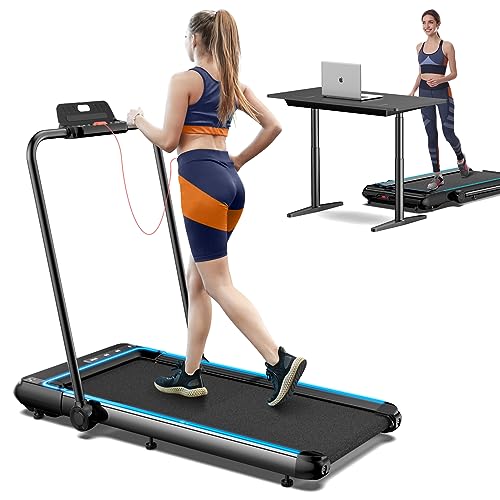Treadmills: A Comprehensive Guide to Understanding Their Functionality, Benefits, and Appropriate Selection
Intro
Treadmills have become a staple in contemporary physical fitness routines, both in homes and gyms worldwide. UK Treadmill provide a hassle-free and efficient way to keep cardiovascular health, increase endurance, and assist in weight management. This post checks out the various types of treadmills, their benefits, functions to consider when purchasing, and some FAQs to direct users in making informed choices.
Kinds of Treadmills
When it comes to choosing a treadmill, it is vital to comprehend the different types available in the market. Here are the main categories:
1. Handbook Treadmills
- Mechanism: These treadmills have a basic style and count on the user's efforts to move the belt.
- Pros: More cost effective, quieter operation, no electrical energy needed.
- Cons: Limited features, may not provide the very same series of exercise strength.
2. Motorized Treadmills
- System: Powered by a motor that drives the belt, allowing users to walk or run at a set speed.
- Pros: Greater variety of speeds and inclines, equipped with numerous functions such as heart rate displays and workout programs.
- Cons: More pricey and may need more upkeep.
3. Folding Treadmills
- Mechanism: Designed for those with limited space, these treadmills can be folded for easy storage.
- Pros: Space-saving, frequently motorized, versatile features.
- Cons: May be less long lasting than non-folding designs.
4. Commercial Treadmills
- System: High-quality machines developed for usage in gyms and physical fitness centers.
- Pros: Built to hold up against heavy usage, advanced functions, often include service warranties.
- Cons: Pricey and not ideal for home use due to size.
5. Curved Treadmills
- System: An unique style that permits users to propel the belt utilizing their own energy.
- Pros: Offers a more natural running experience, promotes better running form.
- Cons: More costly and can be noisier.
| Treadmill Type | Pros | Cons |
|---|---|---|
| Handbook | Inexpensive, no electrical power required | Limited functions |
| Motorized | Range of speeds, advanced functions | Upkeep needed |
| Folding | Space-saving, frequently motorized | May lack resilience |
| Business | Built to last, professional-grade functions | Costly |
| Curved | Natural running experience, promotes excellent form | Higher cost |
Benefits of Using Treadmills
Treadmills offer many advantages that can contribute to one's overall health and physical fitness goals. Some of these benefits consist of:
- Convenient Workouts: Treadmills permit users to work out indoors regardless of weather condition conditions.
- Cardiovascular Health: Regular usage can improve heart health by increasing stamina and promoting healthy circulation.
- Weight Management: Effective for burning calories, which aids in weight reduction and management.
- Adjustable Workouts: Users can control speed, incline, and period to produce tailored exercise experiences.
- Safety: Treadmills provide a predictable surface area, lowering the threat of falls compared to outside running.
- Multifunctional: Many treadmills come with functions like heart rate displays, workout programs, and even home entertainment systems.
Picking the Right Treadmill
When selecting a treadmill, potential buyers ought to consider numerous essential aspects:
Features to Consider:
- Motor Power: Typically determined in horse power (HP), a motor strength of at least 2.5 HP is suggested for serious runners.
- Belt Size: A longer and wider belt accommodates numerous stride lengths, supplying convenience throughout workouts.
- Slope Settings: Adjustable slope functions simulate outdoor hill running and can increase exercise intensity.
- Weight Capacity: Ensure the treadmill can support the user's weight for security and longevity.
- Console Features: Look for easy to use dashboards, workout programs, and Bluetooth compatibility for streaming music or other functions.
Budget plan Considerations
- Under ₤ 500: Entry-level manual treadmills appropriate for casual walkers.
- ₤ 500 - ₤ 1,500: Mid-range motorized treadmills that use more functions and much better toughness.
- ₤ 1,500 - ₤ 3,000: High-end models with sophisticated technology, bigger motors, and longer warranties.
- Over ₤ 3,000: Commercial-grade treadmills ideal for regular use in gyms or training centers.
Frequently Asked Questions (FAQs)
1. How often should I utilize a treadmill?
It is advised to utilize a treadmill at least three to 5 times a week, integrating different strength levels for best outcomes.
2. Can I slim down by using a treadmill?
Yes, constant usage of a treadmill can contribute to weight loss, specifically when combined with a well balanced diet plan and strength training.
3. What is the very best speed to walk on a treadmill for novices?
A speed of 3 to 4 miles per hour is an ideal variety for newbies. It's vital to begin slow and gradually increase speed as comfort and stamina improve.
4. Do I require to use a treadmill if I currently run outdoors?
Utilizing a treadmill can supply extra advantages, such as controlled environments and varied exercises (slope, intervals) that are not constantly possible outdoors.
5. How do I preserve my treadmill?
Regular upkeep includes lubing the belt, cleaning the deck and console, and checking the motor for ideal efficiency.
Treadmills are necessary tools for those seeking to enhance their fitness levels in a regulated and hassle-free way. With different types available, comprehending their features and benefits is vital for making a notified purchase. By considering individual exercise needs, space availability, and budget constraints, individuals can discover the most suitable treadmill that fits their lifestyle. Integrating treadmill exercises into a well balanced fitness regimen can cause enhanced health results and a satisfying exercise experience.

